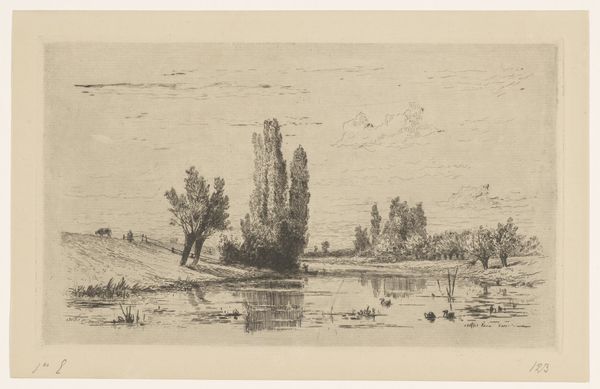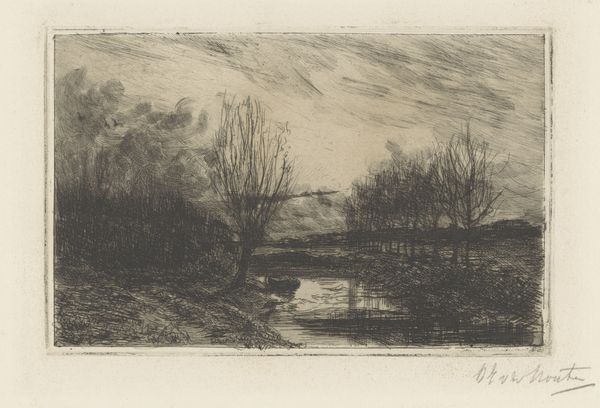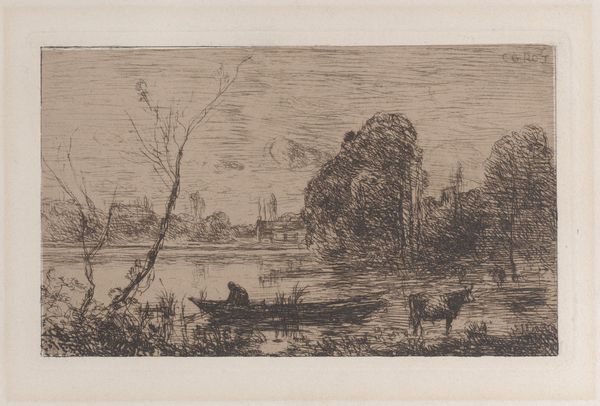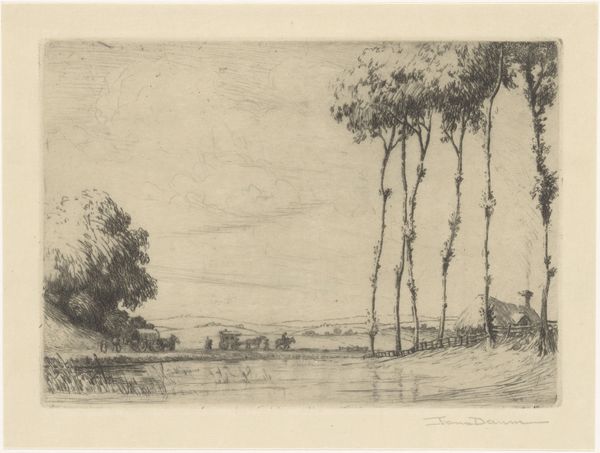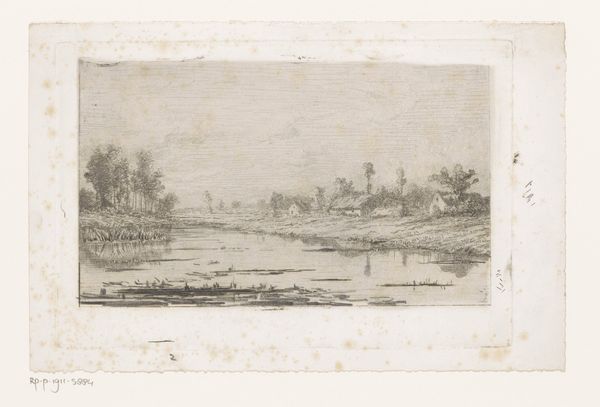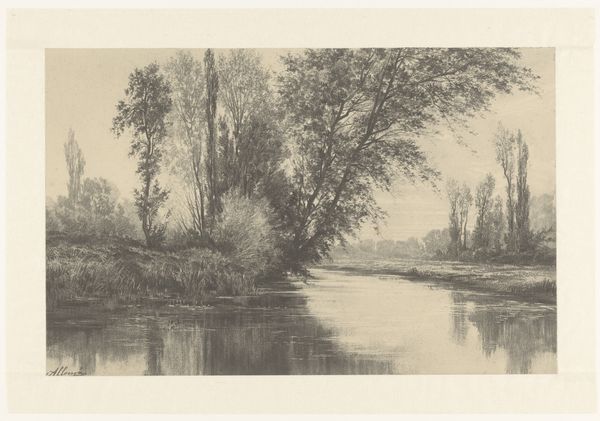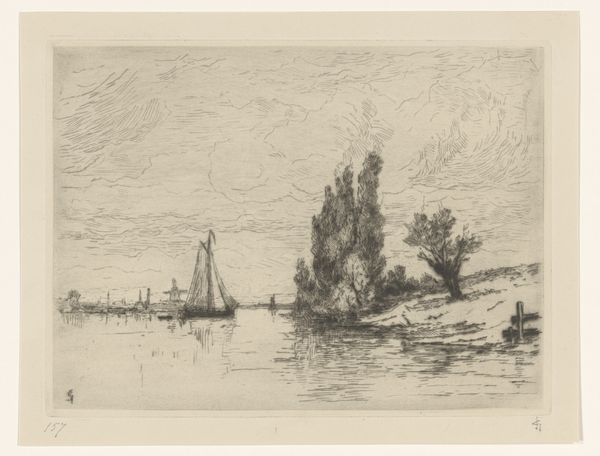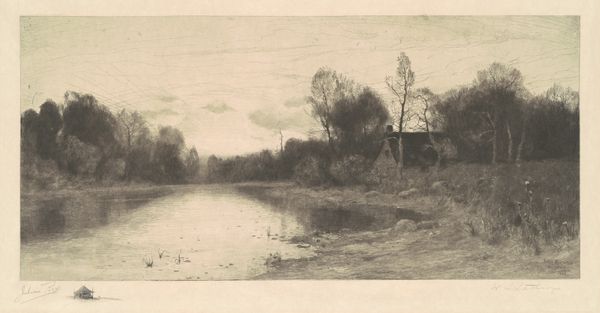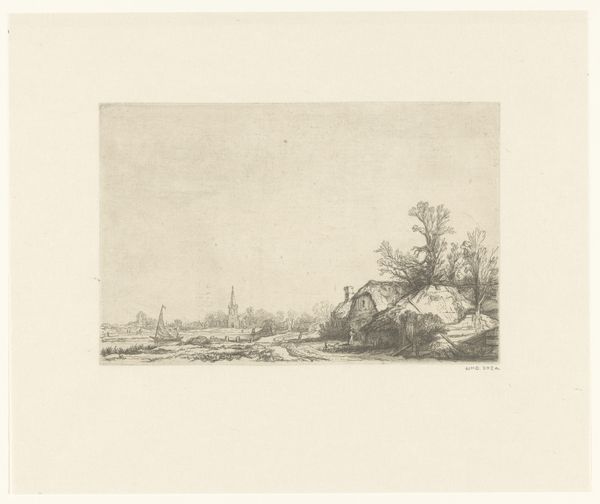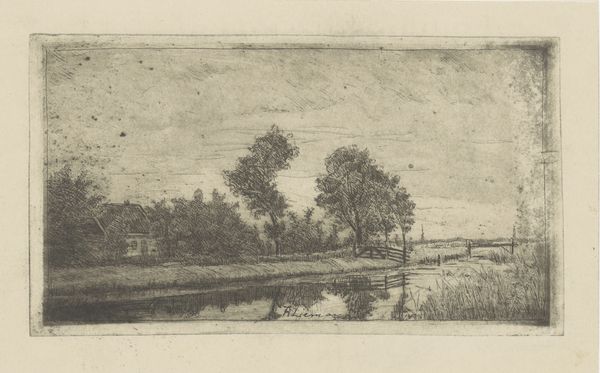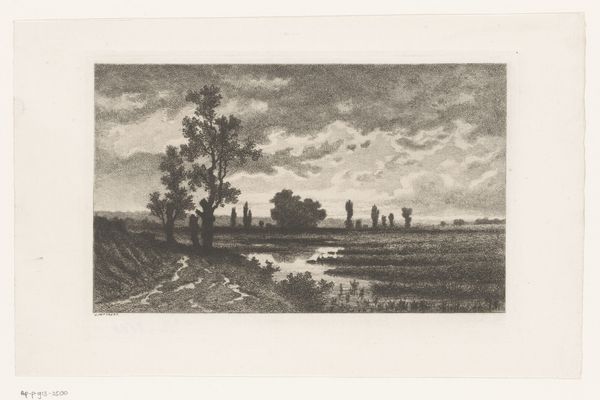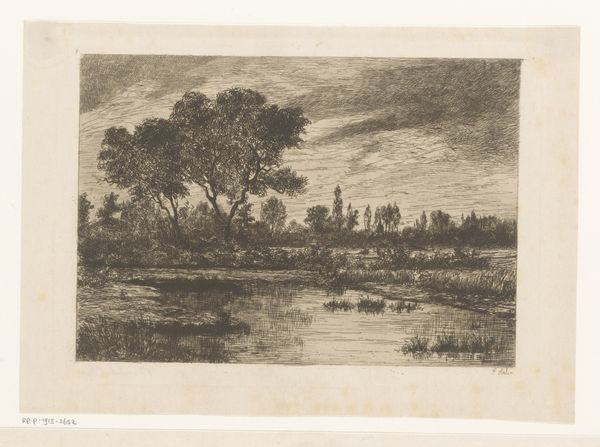
Dimensions: height 341 mm, width 495 mm
Copyright: Rijks Museum: Open Domain
Curator: Before us, we have Auguste Allongé’s "Waterlandschap," created in 1860 using graphite. The scene depicts a tranquil waterscape, very much in the style of romantic realism. Editor: The overriding impression is of stillness and quietude. The monochrome palette accentuates that mood—but, oh, those reflections in the water; such detail drawn using graphite. Curator: The mirror-like surface doubles the existing scene, doesn't it? Look closer, and we might ponder how water traditionally represents the unconscious, and landscapes are often symbols of the inner emotional and psychological state. The placement of these towering yet bent trees against that symbolism really offers a glimpse into a vulnerable mind. Editor: Interesting. I'm fixated on the drawing’s actual making; the repetitive strokes of the graphite, almost a meditation itself. The labor invested to portray such fleeting reflections strikes me. Consider also the materials – graphite, so elemental, used to capture the fluidity of water and light. How does the readily-available pencil bring the scene closer to everyday life? Curator: Precisely! Though understated in tone, the work hints at larger emotional depths. Allonge captures this delicate moment using very available, practical tools to evoke profound feelings, doesn't it? Editor: Right. This artwork becomes a document, capturing the convergence of materials, labor, and quiet contemplation, not just nature itself. I like this kind of material, quiet piece more now that we explored its hidden layers. Curator: Absolutely, now what seems initially like a simple landscape has unfolded, and it presents a more intricate representation, not only of the environment but also our minds within that environment.
Comments
No comments
Be the first to comment and join the conversation on the ultimate creative platform.
